The Economics and Statistics Division maintains archives of previous publications for accountability purposes, but makes no updates to keep these documents current with the latest data revisions from Statistics Canada. As a result, information in older documents may not be accurate. Please exercise caution when referring to older documents. For the latest information and historical data, please contact the individual listed to the right.
<--- Return to Archive
For additional information relating to this article, please contact:
July 22, 2024CENSUS: INTERPROVINCIAL MOBILITY BY OCCUPATION, 2021 Statistics Canada has released new information from the 2021 Census that provides insights into the mobility of workers by detailed occupational categories.
This provides insight into what portion of the 2021 employed workforce (ages 25-64) in each occupation had migrated to Nova Scotia from another province. For each occupation shown below, there are two indicators of interprovincial migration: within the previous year (since 2020) and within the previous 5 years (since 2016).
In senior management occupations, public protection services managers reported the highest portion of the employed workforce that had migrated in the last 5 years. There was also a relatively high (>15%) portion of communications managers that had migrated in the last 5 years. Over the previous year, there were comparatively high portions (>5%) of senior managers that had migrated to Nova Scotia in natural resources production/fishing, public protection services, corporate sales, art/culture/recreation/sport and communications.
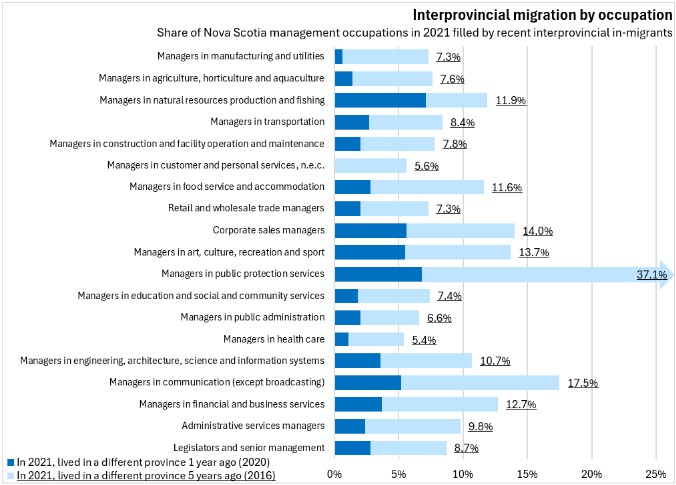
Interprovincial migration was much less prevalent in business, finance and administration occupations.
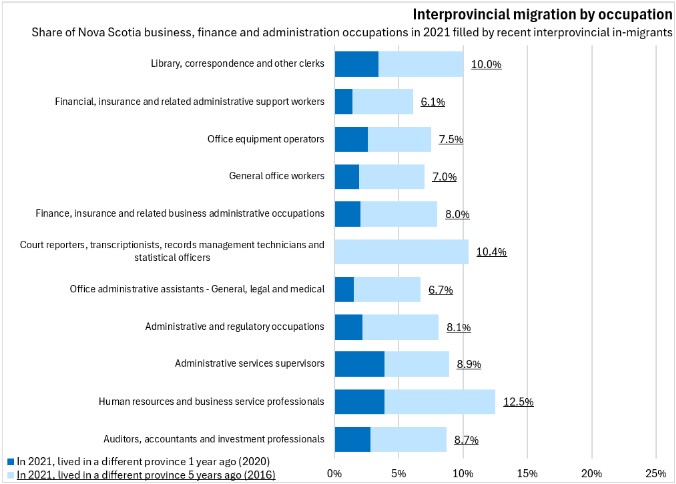
In natural and applied sciences occupations, mathematicians/statisticians/actuaries and life sciences professionals had the highest portions of migrants from the previous 5 years.
In the most recent year, interprovincial migrants were more prevalent in technical occupations in physical sciences as well as among life scientist and physical scientists.
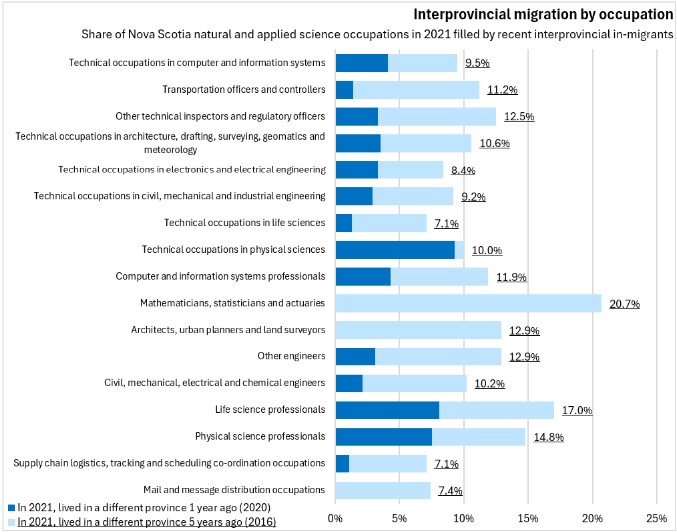
Physicians, veterinarians, dentists, optometrists, chiropractors and other health diagnosing professionals as well as therapy/assessment professionals reported higher shares (>15%) of migrants from the last 5 years in the employed workforce. No health professions reported more than 5% of workforce that had migrated in the last year.
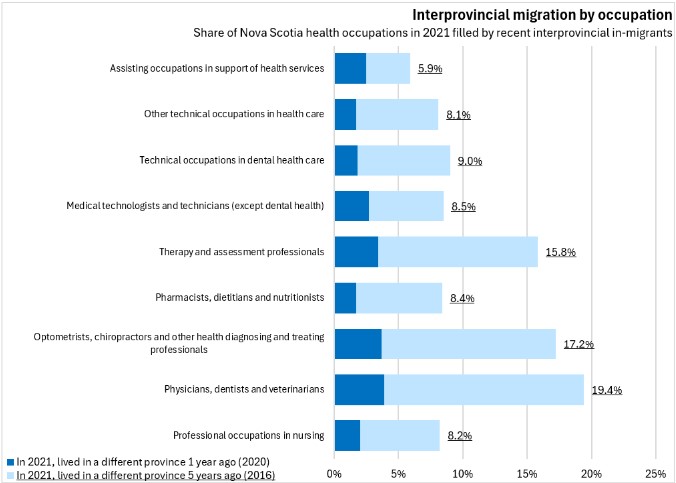
In occupations of education, law, community services and government, front-line protection services reported the highest portions of interprovincial migrants at both single-year and 5-year timeframes. There were also notable shares of interprovincial migrants among university professors, judges/lawyers and policy/program researchers.
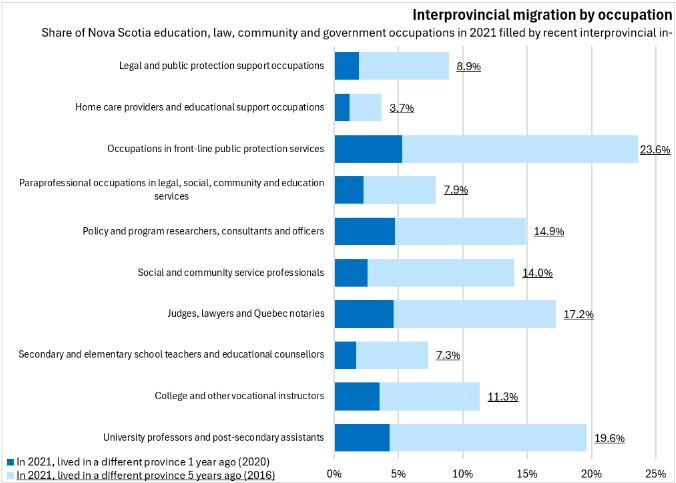
Occupations in arts, culture, recreation and sport that reported higher shares of interprovincial migrants included: writers/translators, photographers/graphic arts technicians/film crew/broadcasters and creative/performing artists.
In the most recent year, there were also high shares of interprovincial migrants among announcers and creative designers/craftspersons.
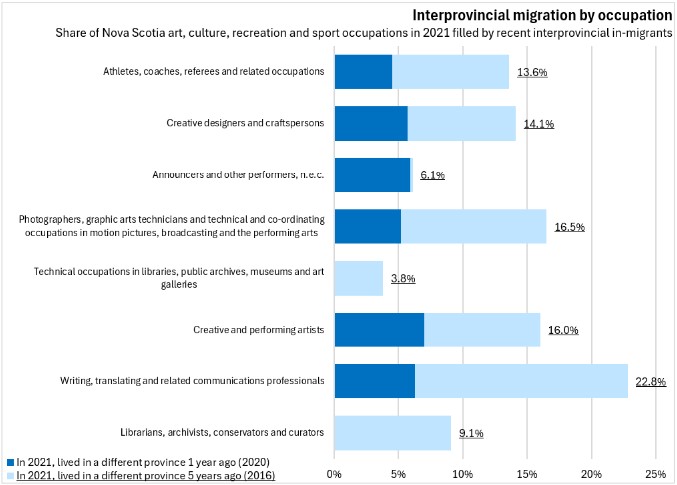
Interprovincial migrants were comparatively rare among Nova Scotia's sales/service occupations in 2021.
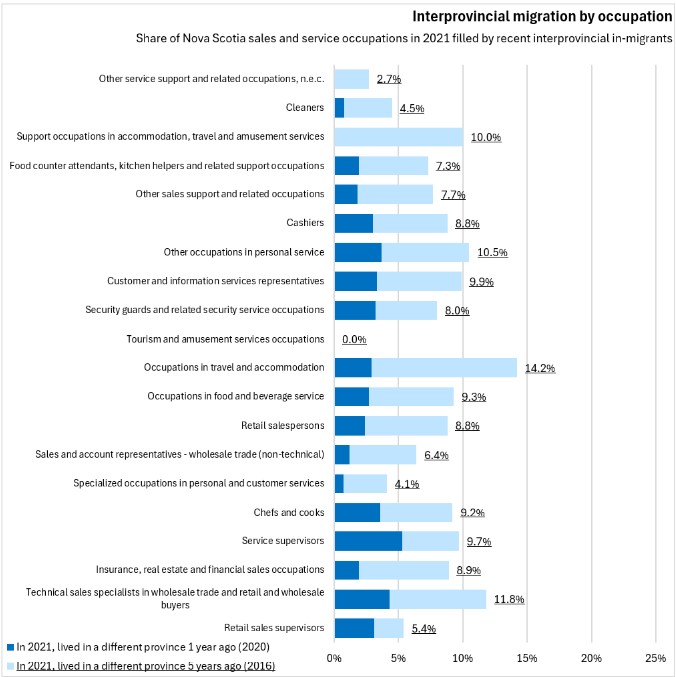
Trades/transport/equipment operator occupations all reported relatively low shares of interprovincial workers in 2021.
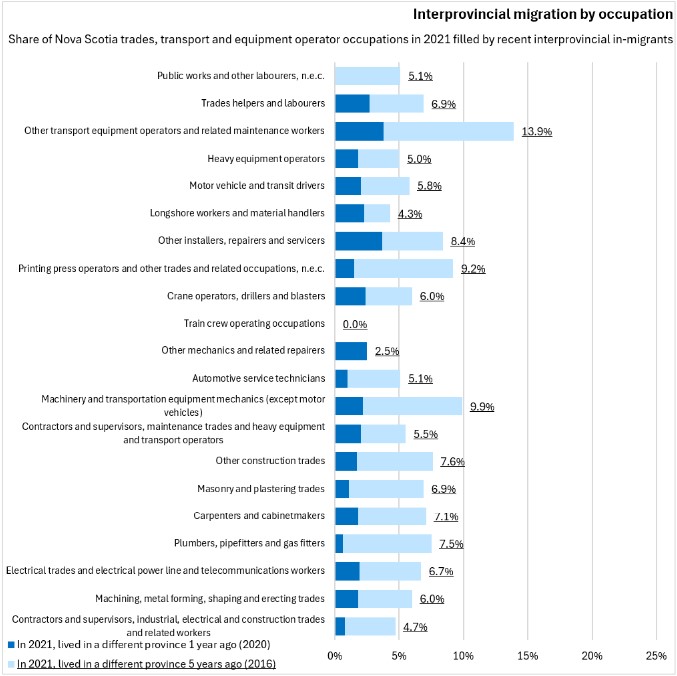
With the exception of mine workers arriving from 2020-2021, there were low shares of interprovincial workers among Nova Scotia's natural resource and agricultural workforce in 2021.
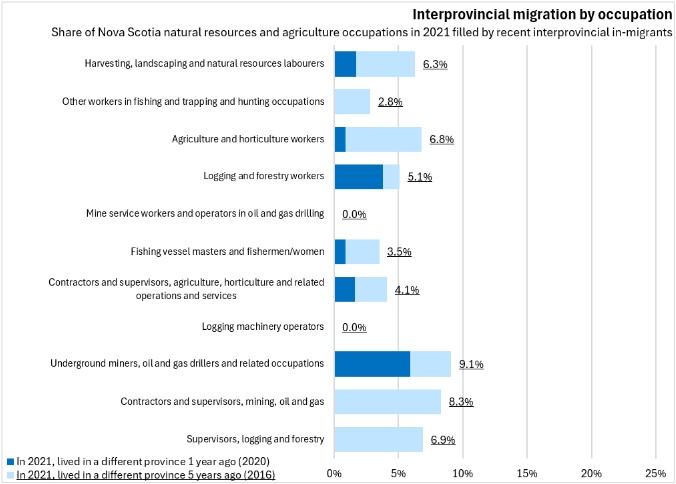
Manufacturing and utility occupations also reported few interprovincial migrants in the Nova Scotia workforce.
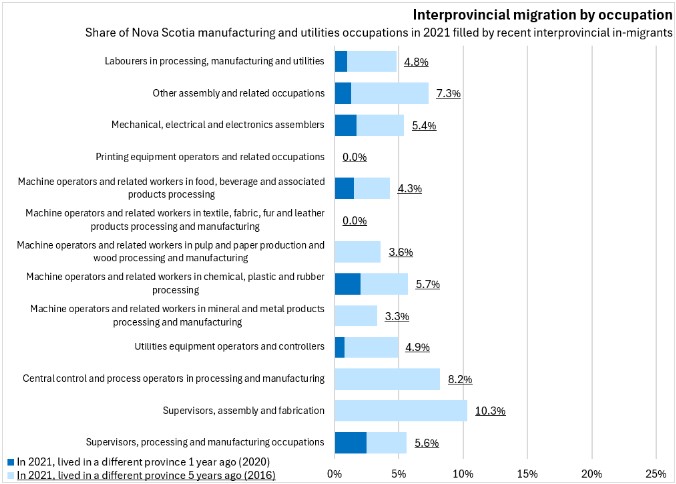
Note: "n.e.c." means not elsewhere classified
Source: Statistics Canada. Table 98-10-0652-01 Interprovincial labour mobility in Canada, by occupation, age and gender: Canada, provinces and territories
<--- Return to Archive